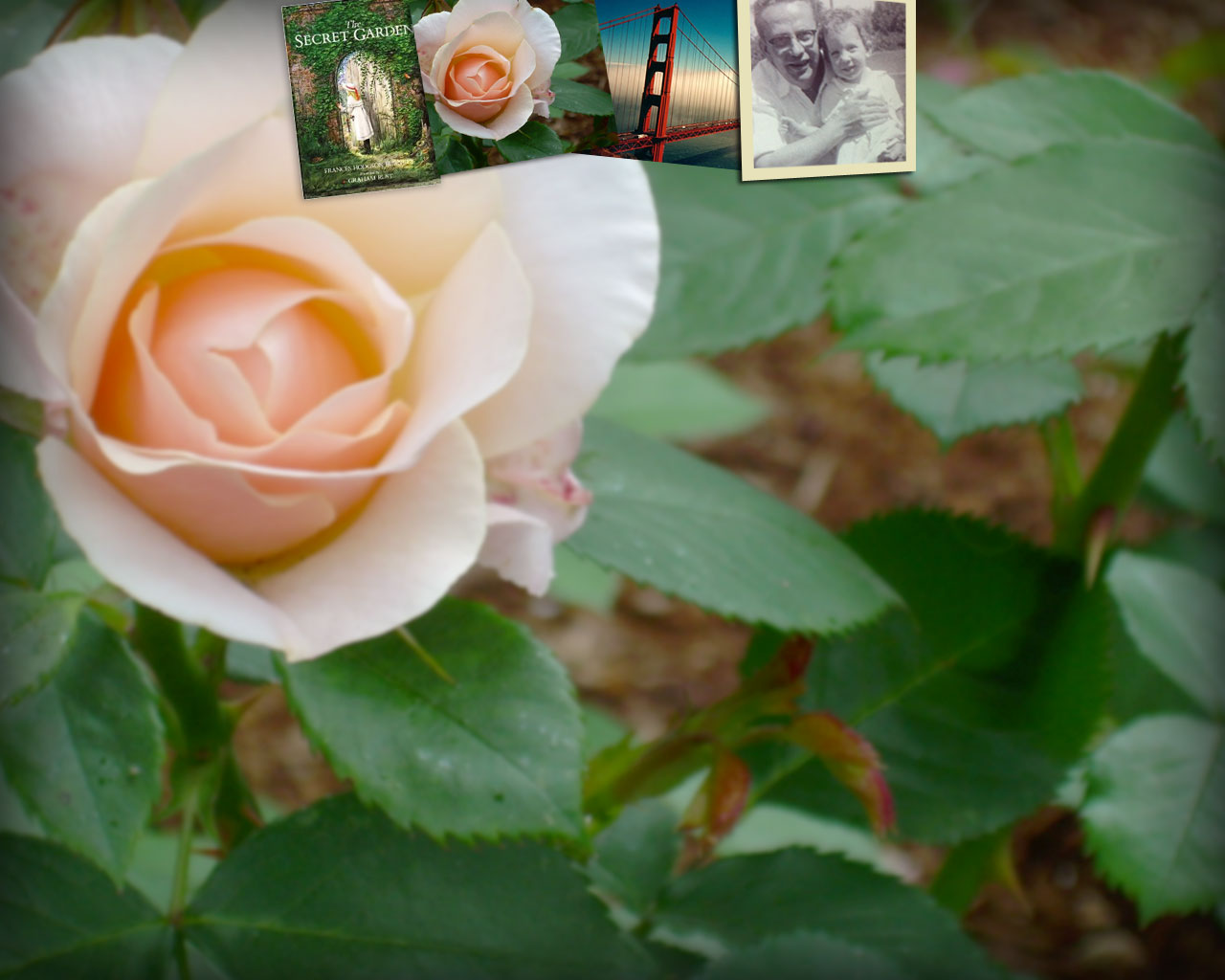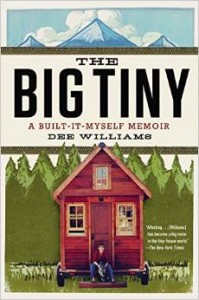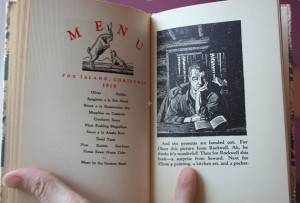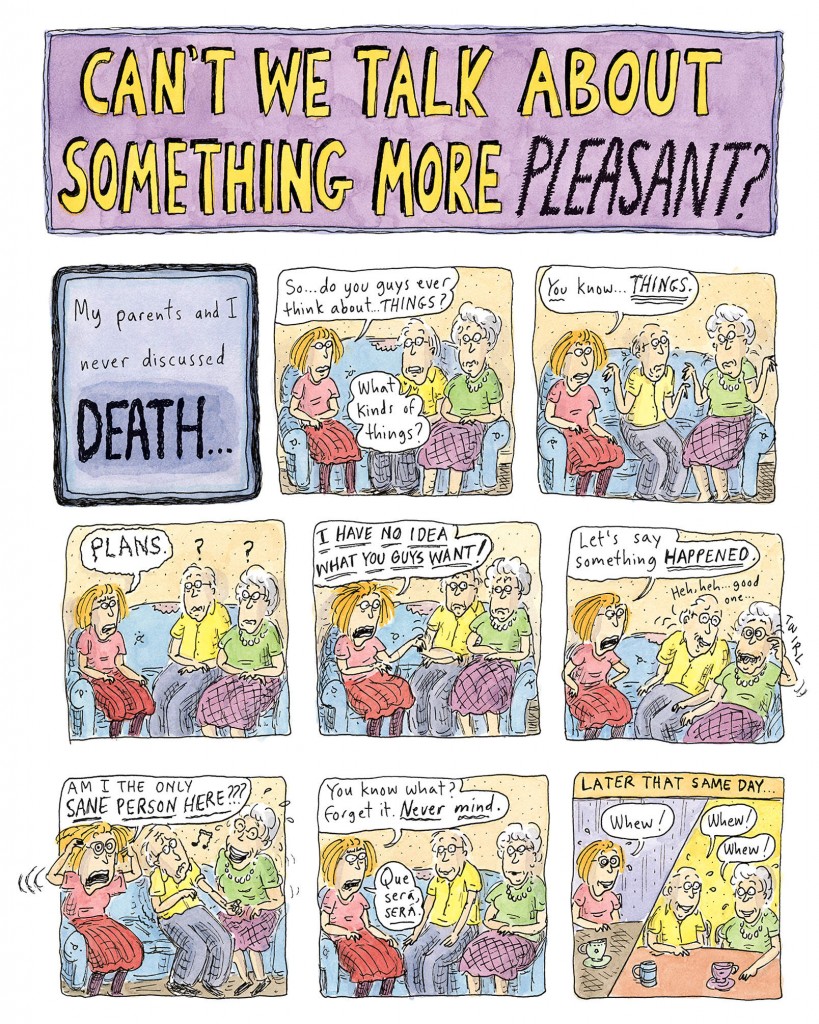Neither Here Nor There by Bill Bryson
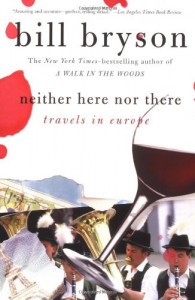 I was in need of a book that would give me an escape and make me laugh. That’s when I’m grateful for Bill Bryson.
I was in need of a book that would give me an escape and make me laugh. That’s when I’m grateful for Bill Bryson.
Neither Here nor There is a book I keep to re-read in just such circumstances and when I opened it again the other day — it did the trick — I immediately started to giggle.
From the back cover:
Like many of his generation, Bill Bryson backpacked across Europe in the early seventies — in search of enlightenment, beer, and women. Twenty years later he decided to retrace the journey he undertook in the halcyon days of his youth. The result is Neither Here Nor There, an affectionate and riotously funny pilgrimage from the frozen wastes of Scandinavia to the chaotic tumult of Istanbul, with stops along the way in Europe’s most diverting and historic locales.
Mr. Bryson starts his mid-life crisis journey in Hammerfest, Norway (as far north as you can get in the world by public means of transport, he says) and re-traces his 1970 trip through Europe encountering language barriers, seedy train station hotels and delightful characters along the way.
I could quote this book for pages but will restrain myself to my favorites, get your hands on a copy and find your own:
The best than can be said for Norwegian television is that it gives you the sensation of a coma without the worry and inconvenience.
Romans park their cars the way I would park if I had just spilled a beaker of hydrochloric acid on my lap.
In the evening, I went looking for a restaurant. This is often a problem in Germany. For one thing, there’s a good chance that there will be three guys in lederhosen playing polka music, so you have to look carefully through the windows and question the proprietor closely to make sure that Willi and the Bavarian Boys won’t suddenly bound onto a little stage a half-past eight. It should have been written into the armistice treaty that the Germans would be required to lay down their accordions along with their arms.
The problem is that the pedestrian cross lights (in Paris) have been designed with the clear purpose of leaving the foreign visitor confused, humiliated, and, if all goes according to plan, dead.
She gave me one of those impassive Gallic (as in French) shrugs – the kind where the chin is dropped to belt level and the ears are pushed to the top of the head with the shoulders. It translates roughly as ‘Life is a bucket of shit, monsieur, I quite agree, and while I am prepared to acknowledge this fact I shall offer you no sympathy because monsieur, this is your bucket of shit’.
As you may have now surmised, Mr. Bryson is not afraid to be politically incorrect (he calls France’s population ‘Insufferably French) but he is also a devoted traveler and relishes the wonder and beauty of other cultures and lands.
One of the small marvels of my first trip to Europe was the discovery that the world could be so full of variety, that there were so many different ways of doing essentially identical things, like eating and drinking and buying movie tickets.
I arose each morning just after dawn, during that perfect hour when the air still has a fresh, unused feel to it, and watch the city (Rome) come awake — whistling shopkeepers sweeping up, pulling down awnings, pushing up shutters.
The Thomas Cook European Timetable is possibly the finest book ever produced. It is impossible to leaf through its five hundred pages of densely printed timetables without wanting to dump a double armload of clothes into an old Gladstone and just take off. Every page whispers romance: Montreux-Zweisimmen-Spiez-Interlacken or perhaps Beograd-Trieste-Venezia-Verona-Milano. Who could recite these names without experiencing a tug of excitement? Who could glance at such an itinerary and not want to climb aboard? (Sadly, this guide is no longer published or even on-line – they went out of business in 2013.)
This re-read made my travelers feet itchy. Mr. Byrson travels with open eyes, a sense of adventure, child-like wonder and a marvelous sense of humor. A required skill set for every traveler.
N.B. Neither Here nor There is also educational, you’ll learn important facts about each country. For example, did you know that Liechtenstein is the world’s largest producer of sausage skins and dentures?
N.B.2 Stay tuned, we’re planning a trip to Switzerland …hmm perhaps this itinerary — Montreux-Zweisimmen-Spiez-Interlacken
My Salinger Year Joanna Rakoff
 Lets be clear, this is not a memoir specifically about J. D. Salinger, nor another sordid tale of having had an affair with him (thank goodness)–this is a memoir of a young woman working at his literary agency in the mid 1990’s.
Lets be clear, this is not a memoir specifically about J. D. Salinger, nor another sordid tale of having had an affair with him (thank goodness)–this is a memoir of a young woman working at his literary agency in the mid 1990’s.
Alright I can hear your yawns from here, but I’m always interested in the inner workings of the publishing industry and so I decided to read this memoir by Joanna Rakoff.
It’s the mid 1990’s and Joanna is 23 years old, and much like in The Devil Wears Prada, she really has no experience or interest in publishing but is thrilled to land an “assistant” position at a literary agency – referred to as “The Agency”. This is one of those classy but underpaid positions that presumably one can brag about at dinner parties. Ms. Rakoff has never read anything by Salinger and she thinks when agency staff refer to “Jerry”, their star client, they mean Jerry Seinfield. In fact “Jerry” is their code name for J. D. (Jerome David) Salinger, the notoriously reclusive author.
This is an old-school literary agency. Here is a world of richly carpeted offices, no overhead florescent lighting — just shaded lamps, messengers, martini lunches and book-shelved lined hallways. Computers are only whispered about by the staff.
Joanna is given strict orders to never give out any information on Salinger and the agency must protect his privacy at all costs. Joanna’s main job is to answer Salinger’s many fan letters with a simple but curt form letter:
“Dear ___________
Many thanks for your recent letter to J.D. Salinger. As you may know, Mr. Salinger does not wish to receive mail from his readers. Thus, we cannot pass your kind note on to him. We thank you for you interest in Mr. Salinger’s books.
Best, The Agency”
Her boss insists that Joanna type these letters out individually on a Selectric typewriter (using carbon paper) in order to give the fans a sense that an actual agency person has written back to them. Joanna must also answer her boss’s phone and if “Jerry”calls she is to keep it short and take a detailed message.
Joanna’s personal life is a mess, she lives with a ghastly boyfriend in a run-down apartment with no heat or a kitchen sink (?). She has, for no explanation, left the guy she really loves and he fled to California. Her parents have presented her with all her college bills unexpectedly unpaid and used her credit cards to rack up debt that Joanna must some how pay down. She’s broke financially and in her heart, so the agency is her only solace as Joanna is a lover of books, an avid reader and an aspiring poet.
There’s this lovely quote
On authors: The strange wonder of powerful writing, engaged in like some act of reflective devotion, and then, sent out, as on the wind, to find some home with unknown readers who in turn receive this revelation and transformation. Literature not as `escape’, literature as engagement.
It’s fun when Joanna steers away from the standard form letter and tries writing personal letters to the Salinger fans – with disastrous results. She hopes to become an agent and dips into the agency slush pile, finds an unknown author and tries to get her published. Also in the end, Joanna actually meets Salinger when he make a rare appearance at the agency offices.
That, my friends is about all that was interesting about this memoir. I’ve just saved you the chore of reading it yourselves. I did find some interesting parts about the inner workings of a literary agency – especially the care and feeding of Salinger himself. The grand event of finally getting one office computer for everyone to share was amusing and there’s some sly literary name dropping. This memoir covers a entire year of Ms. Rakoff’s life and it felt equally long to make it through this slow and overly-detailed story. One of the professional reviewers mentioned that this memoir started out as a much shorter magazine story and perhaps it should have stayed in that form.
Advanced review copy provided by Alfred A. Knopf
The Big Tiny by Dee Williams
Square Feet: 84. Possessions: 305.*
(*This headline is from the NY Times review – I had to swipe it.)
January is my time for sorting through clothes and books, cleaning out the freezer and diving into those mystery boxes under the stairs. By necessity, we are already fairly simplified given our 1,100 sq. ft row house — but after reading this inspirational memoir — we got nothing on Dee Williams.
Ms. Williams decided to build an eighty-four-square-foot house on wheels, by herself — as a way to start building a simpler more meaningful life.
This authentic memoir tells of her challenges both building-wise and health-wise. She is not an experienced builder, but knows her way around tools, so she ventures ahead after meeting and studying others in the “tiny house” movement. It’s not enough that she is dealing with a newly diagnosed heart condition and is often disabled and hospitalized, she also experiences grimace-worthy mishaps. She glues her hair into the siding, almost shears off her ear when some plywood catches on an earring, tries to secure the roof (in flip flops!) and falls from her sleeping loft when the ladder shifts out from under her.
But beyond the Three-Stooges-like mishaps, this is a book to inspire. How can you not be impressed (and perhaps even envious) of someone who can list everything she owns on one sheet of paper (the handwritten list is reproduced in the book). Also enviable, Ms. Williams can clean her entire house in ten minutes and her monthly bills run approximately eight dollars. Granted, she is living in a friend’s back yard and using this friends water, laundry and shower. But Ms. Williams has her own kitchen (one burner), her own toilet (compostable) and a sleeping loft with a view of the stars – risky ladder notwithstanding.
I was fascinated at Ms. Williams perseverance in the face of many hurdles — obstructive city codes, a newly prescribed oxygen contraption that meant snaking a breathing tube from a outside generator into her house, and an aging dog that she carries up and down the sleeping loft ladder. But she remains positive and loving throughout.
Happily, the author is also quirky and likeable, she still lusts after things she doesn’t need at Target (I have the same problem, I blame the hypnotic bulls-eye logo), she delights in fun underwear and prefers flip flops to shoes. There is also a quiet soulfulness throughout, the reader is aware that Ms. Williams has a degenerative disease. She writes with a quiet grace about her newly acquired time to savor every moment — as in this quote.
I stumbled into a new sort of ‘happiness’, one that didn’t hinge on always getting what I want but rather, on wanting what I have. It’s the kind of happiness that isn’t tied so tightly to being comfortable (or having money and property), but instead is linked to a deeper sense of satisfaction – to a sense of humility and gratitude, and a better understanding of who I am in my heart. I found a certain bigness in my little house – a sense of largeness, freedom, and happiness that comes when you see there’s no place else you’d rather be.
This book could have used some strong editing, it does ramble off the tracks, but it should provoke all of us to think on the question “how much is enough?”. Given America’s self storage business is a $25-billion a year industry, Ms. Williams experiences are an inspiration. This book is not so much of a “how-to” guide but a “why to” memoir. While not everyone (not me – see below) is suited to such an extremely tiny house, this book will make you contemplate the “too much stuff” syndrome — why not simplify, declutter and live smaller?
N.B. Living in such a small space alone may be one thing, but can you image two people in 84 square feet? I’m definitely not a candidate. No way I’m making the middle of the night climbs up and down a sleeping loft ladder, I’d be lost without my book collection, I’d sorely miss my tea pots and at the very least — my husband and I already experience too much “togetherness” now we’re both retired — so count me out …. but I must go now and clean out a closet or two.
Advanced reading copy provided by Penguin Group via NetGalley.
A Northern Christmas by Rockwell Kent
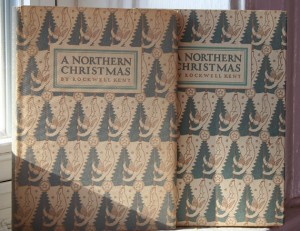 10 Days Until Christmas
10 Days Until Christmas
I found this book at Bells Bookstore in Palo Alto, back when I would sneak to bookstore to escape the high tech insanity. Bells is a wonderful family run, independent bookstore with rare and used books. If I remember, this wasn’t very expensive and the only reason I can recall where it came from is Bells bookmark is still in the book. Barbara Wohl (now retired from the store) is a well-known heritage rose gardener and her garden just up the street from the store is to die for. But I digress…
At merely 20 pages, I knew this tiny book with it’s decorated sleeve and cover was mine before I even opened it. A short story which tells of a father and young son spending Christmas in a small hand built cabin in 1918, just a few miles from the Arctic Circle, Rockwell Kent is the graphic artist probably best known for his magnificent illustrations for Moby Dick and the complete works of Shakespeare. Here and Here
Mr. Kent published WILDERNESS, A Journal of Quiet Adventure in Alaska in 1941 and this is taken from that larger published work. The introduction explains he had this little volume reprinted as Christmas presents for all his friends a few years later. Here’s a couple of the illustrations from A Northern Christmas — aren’t they just wonderful?
As the holiday approaches Mr. Kent and his son improvise their holiday cheer with a tree, hand made ornaments and candles. The second photo here shows the menu they cobbled together as a holiday feast for their only neighbor Olson, a weather beaten gold miner who prepared carefully for the occasion with hair specially clipped around his hears and a gold nugget stickpin in his silk tie. Beans a la Resurrection Bay anyone?
Some other special selections from this Christmas tale (and yes the dates are printed in red in the book – a charming touch):
Thursday, December nineteenth. This day is never to be forgotten, so beautiful, so calm, so still with the earth and every branch and tree muffled in deep feathery, new fallen snow. And all day the softest clouds have drifted lazily over the heaven, shrouding the land here and there with veils of falling snow, while elsewhere or through the snow itself the sun shone. Golden shadows, dazzling peaks, fairy tracery of branches against the blue summer sea! It was a day to Live, – and work could be forgotten.
Christmas Eve. We’ve cleaned the house, stowed everything away upon shelves and hooks, and in corners, moved even my easel aside; decorated the roof timbers with dense hemlock boughs, stowed quantities of wood behind the stove — for there must be no work on that holiday – and now both Rockwell and I are in a state of suppressed excitement over tomorrow. What a strange thing! Nothing is coming to us, no change in any respect in the routine of our lives but what we make ourselves – and yet the day looms so large and magnificent before us! I suppose the greatest festivals of our lives are those at which we dance ourselves.
The underline is mine …
Wishing you a happy holiday countdown with your own festivals.
Can’t We Talk About Something More Pleasant? by Roz Chast
 I heard Roz Chast talking about her newest book on NPR and bought this memoir the next day. I strongly recommend getting this book in the hardback versus the electronic version, as you want to experience her cartoons and text laid out as she intended.
I heard Roz Chast talking about her newest book on NPR and bought this memoir the next day. I strongly recommend getting this book in the hardback versus the electronic version, as you want to experience her cartoons and text laid out as she intended.
I inhaled this book in two sittings. I’ve long been a fan of Roz Chast’s cartoons in the New Yorker and elsewhere, so this was an insight into a moving part of her life.
This is a cartoon (with prose) memoir of her aging Jewish parents – well into their 90’s and, although always independent and self-sufficient, now in decline. As their only child, Ms. Chast tries to muddle through their needs – wanting to respect their pride, while still caring for them with their weakened health and memory issues.
Sounds dreary? Wrong! This is a funny, moving and soulful accounting of caring for aging parents that is in fact deeper and more insightful than a cartoon memoir might appear.
Some of the humor is laugh-out loud funny, other times I found myself laughing uncomfortably but through her cartoons, Ms. Chast is able to assure us that the negative, frustrated feelings in this difficult situation are as important and valid as the positive, loving feelings. It shows the complicated emotions dealing with aging parents – especially when they’re resilient, resistant and proud.
If you’re a fellow baby boomer (hate that term, but OK) and dealing with these issues or already have – you will gain insight from this book. The ending is devastating and emotional, but the entire memoir is TRUE and honest – frightening and yet lovingly funny. Yes, that’s it – lovingly funny, honest and true. Read it.
